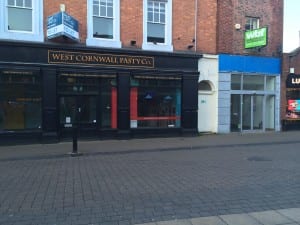This week we had an epiphany. We already knew we were interested in creating art that was political as well as historical, and we knew that we wanted to combine the topics of Feminism and Capitalism, but we were unsure of theorists and practitioners to inspire us and to ground the research we’d already done; this was until we were introduced to the Situationists.
Situationists were interested in creating every day situations in order to make daily life a creative, individual, spontaneous experience. They do this in an attempt to counteract the alienation in society caused by mass media and consumerism (essentially, Capitalism). Hopefully, through these situations people will see the city in a new way, ignoring the consumer culture being fed to them. An interesting quote we found from Situationist Raoul Vaneigem reads:
“People who talk about revolutions and class struggle without referring explicitly to everyday life, without understanding what is subversive about love and what is positive in the refusal of constraints, such people have a corpse in their mouth”. (Vaneigem, 1967)
Essentially, what Vaneigem is saying is that people who protest against Capitalism and oppression in a way that ignores the every day (real people and real situations) have nothing of meaning to say – their ideas are dead. For revolution to work it needs to be alive, it needs to be REAL.
We linked this form of protest with our historical research on the Suffragette Rally in the area Speaker’s Corner now stands. These were also real women campaigning for political and social change, trying to establish a revolution and overthrow the laws of society that held them back. Many Suffragettes, after being arrested and imprisoned, went on hunger strikes as it was one of the only forms of protest available to them in a restricted environment. Hunger-striking Suffragettes were force-fed though tubes (either down the nose or throat); a horrific, traumatising experience for those who experienced it. This idea of force-feeding and using force/restraint to make people conform reminded us of the idea Situationists discussed about consumer culture and how it is everywhere in modern day society – it is force fed to us, whether we like it or not. This link with the Suffragettes creates a powerful metaphor for people being overpowered and silenced by authority; “the man” (like the political posters in the Parisian riots), in both senses of the word.
One way that we as a group observed this force-feeding of consumer culture in Speaker’s Corner is the use of neon lighting. We found neon lights on the signs for banks, on the euro exchange and on the cash machines, all of which are used as a form of advertising – you can’t look away as you can see them out of the corner of your eyes. We also discussed how neon lights are typically used on the outside of places like takeaways and even brothels/strip clubs; all of these things, both in Speaker’s Corner and elsewhere, relate to the idea of immediate gratification. A simple transaction can give you what you want instantly, an idea that is promoted through Capitalism.
All of these places of immediate gratification, the corporate chains, and the dancing neon patterns that make up the buildings around Speaker’s Corner violently contrast with the sparse, un-kept square in the middle. This stage-like space in the centre is a recognised area for people to practice freedom of speech and political expression (a title inspired by the Suffragette rally of the past) and when coupled with almost the embodiment of Capitalism surrounding it, an interesting picture is created.
We collated all these ideas together and came up with an idea for a performance:
- A durational piece spanning an afternoon (the time when most people will be out).
- Rent out the small empty unit opposite Halifax – red neon lights in window and sign advertising “Girls”. This has connotations of a brothel-type building – what is the difference between this kind of immediate gratification and the immediate gratification from the bank/cash machine opposite?
- Use the idea of exchange and transaction (prevalent theme in Speaker’s Corner with big businesses and banks) – offer women FREE services such as nail painting, hand massages, etc. and the only thing they give you in exchange is story: what it is t0 be a woman/experiences of women/personal anecdotes/modern femininity.(reminiscent of Salon Adrienne).
- Use quotes (anonymous, but with permission) from women from throughout the day – write on Suffragette-esque placards.
- End of day create a forest-like installation in the square of these placards – free-standing as though being held but nobody there: emulates ghosts of who was there before = palimpsest.
Works Cited:
Vaneigem, R. (1967) The Revolution of Everyday. Paris: Editions Gallimard.
Howells, A. (2005) Salon Adrienne. [performance] London: Battersea Arts Centre and Glasgow: Glasgay! Festival.


